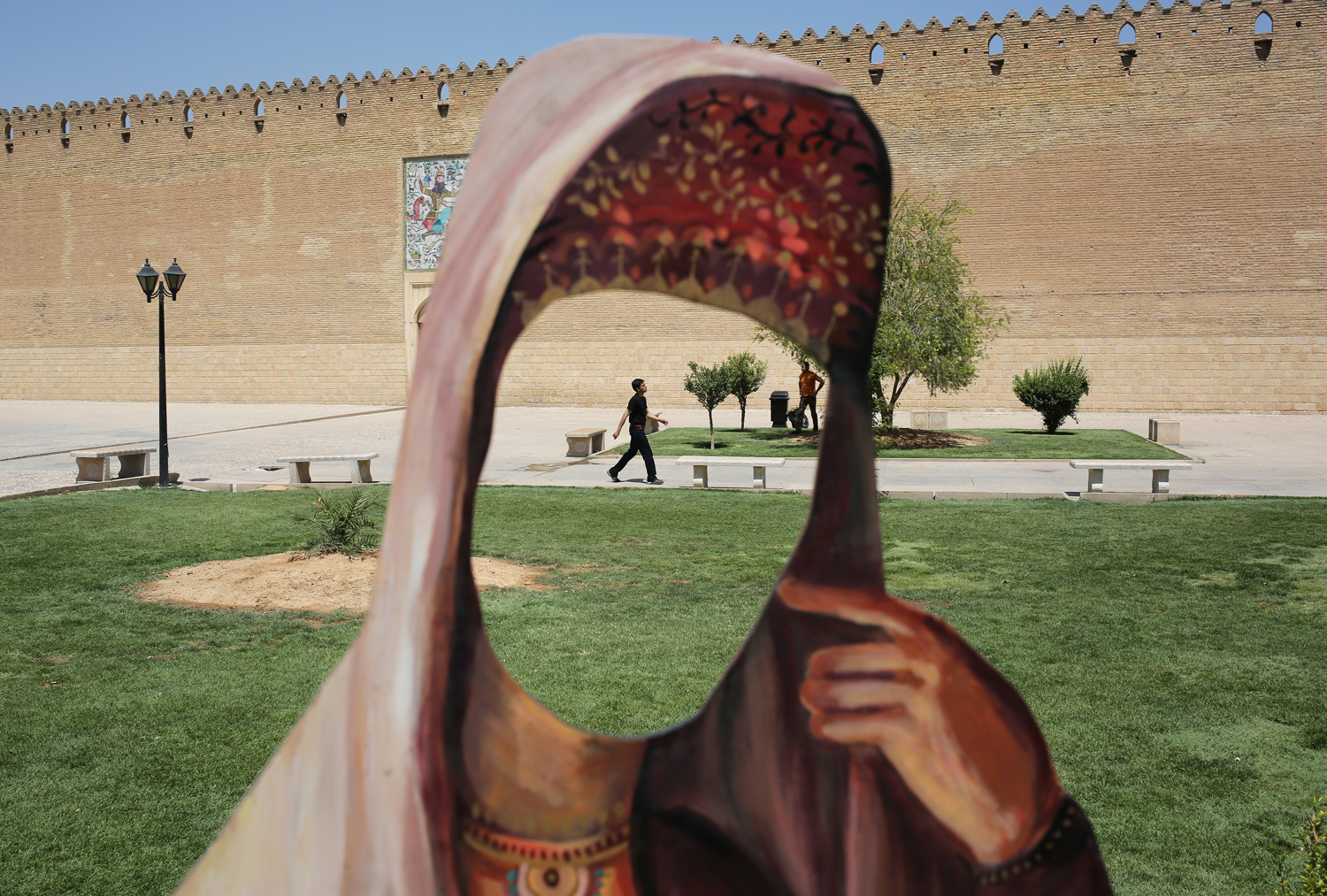
Features and Essays
Diana Markosian: Burmese Nights (The New Yorker) Markosian recently travelled to Kachin State, a remote region in northern Burma that has played host to an anti-government insurgency for the past five decades
John Stanmeyer: The Timeless Sands of Saudi Arabia (PROOF) Hipstamatic photos from Saudi Arabia related to Stanmeyer’s most recent National Geographic assignment
Stephen Shore: From Galilee to the Negev (Buzzfeed) Shore journeyed though Israel and the West Bank to document moments of everyday life in this complex and conflicted region
Oded Balilty: Israel Desert Ablaze with Burning Man (AP Images blog) Midburn, Israel’s first Burning Man festival in Negev desert, modeled after the popular carnival held annually in the Black Rock Desert of Nevada. Midburn is a mix of “midbar,” Hebrew for desert, and the English word “burn”

John Moore: Iran Offers a Window to the West (New York Times Lens blog) Given a chance – and a week – to visit Iran, John Moore took to the road in central Iran to see daily life in a place that has opened a bit to the West
Pari Dukovic: Ghosts of Gezi (The New Yorker) A portfolio of photographs documenting life in Istanbul a year after the 2013 protests
Anastasia Taylor-Lind: Portraits from Kiev (New York Times) Photographs from Taylor-Lind’s upcoming book, Maidan — Portraits from the Black Square
Stanley Greene: Journey of the Dead: From Ukraine to Russia (NOOR)
Paolo Pellegrin: Life in the Death Valley (New York Times magazine) Mass graves still found in Bosnia
Andrew Miksys: Disko (Wired Raw File) Dance clubs in rural Lithuania
Daniella Zalcman: England’s WWII Reenactors (LightBox) Zalcman spent the last year photographing British war reenactors paying tribute to history and the lasting legacy of World War II
Marco Casino: Horse Racing Fades in Italy (New York Times Lens blog) Over the last decade, many of Italy’s racetracks have closed, taking with them thousands of jobs and memories of a once-heralded sport
Alessandro Penso and Michele Palazzi: Fieldwork Italy, The Basilicata (Foto8) Low-paid African migrant farm workers in Italy
Jane Hahn: Dambe in Lagos (The New Yorker’s Photo Booth) Dambe is a type of boxing that is popular among the Hausa, in West Africa. The sport originated with the Hausa butchers guild, as a means of military training; today it can be seen in market squares across the region | Also Slate Behold photo blog here
Phil Moore: Somalis exiled from Nairobi (Al Jazeera) The forced removal of Somali nationals from the Kenyan capital to the country’s arid north
Jonathan Torgovnik: Girl Soldier (Reportage by Getty Images) Former female child soldiers in Sierra Leone
Francesco Anselmi: Central African Republic (Contrasto)

Peter van Agtmael: Law and disorder on the Pine Ridge Reservation (MSNBC) About 35 tribal police officers on the Pine Ridge Indian Reservation patrol 2 million rambling acres, an area larger than the states of Delaware and Rhode Island combined
Natalie Keyssar: Unstoppable: Meet the Dancehall Queens of Brooklyn (LightBox) Dancehall is a style of music and dance born in Jamaica in the 1970s, and Brooklyn, New York, with its large Caribbean community, is home to a thriving Dancehall scene
Todd Heisler: On the Road to a Photo of America (New York Times Lens blog) A road trip from Laredo, Tex., to Duluth, Minn., in search of how immigration has changed America in real lives demands a balance between plotted paths and serendipity | The entire project so far, here
Ilona Swarc: Lonesome Doves (National Geographic) Portraits of rodeo girls in Texas illuminate a different aspect of femininity
Clara Vannucci: Bail Bond (New York Times Lens blog) A bail bondsman in Brooklyn becomes a bounty hunter to search for missing clients
Ian Willms: After The Gold Rush (Globe and Mail) The long, slow decline of Canada’s heartland
Joakim Eskildsen: Rum, Rhythm and Revolution (LightBox) A glimpse of Eastern Cuba, a region that differs greatly from the cosmopolitanism of Havana city
James Rodriguez: A Funeral for a Boy Killed in Guatemalan Massacre Over 30 Years Ago (Vice) Funeral for a boy found in a mass grave over 30 years after his death at the end of the civil war
Sebastian Liste: Rio’s Favelas Bring the Funk (New York Times Magazine) The World Cup soundtrack
Nicolò Lanfranchi: Football in a Maximum Security Prison in João Pessoa (Wired) For one week each year, the Geraldo Beltrão maximum security penitentiary in João Pessoa, Brazil holds a soccer tournament for the prisoners
Sebastian Liste: Football as Religion in Brazil (LightBox) Fans and players in Rio de Janeiro, for whom football is no mere pastime, it is a religion
Vincent Catala: Rio, the body of the city (Agence Vu)
Mario Tama: Brazil’s Troubles Surface Ahead of the World Cup (Time.com) A stark glimpse at Brazil as the country prepares to host the 2014 FIFA World Cup
Articles
From Robert Capa’s Editor, Unearthed Scenes of Normandy, Summer 1944 (The Daily Beast) John G. Morris, now 97 years old, has published a World War II photography book unlike anything you’ve ever seen
Robert Capa’s Iconic D-Day Photo of a Soldier in the Surf (Time.com) On the 70th anniversary of D-Day, a TIME video explains how famed Normandy landings photographer Robert Capa’s negatives were almost lost
Photojournalism (The Sunday Times Magazine) Multimedia highlighting photojournalism that has appeared in the magazine
Photography theory: a bluffer’s guide (Telegraph) Bewildered by Berger? Stumped by Sontag? Telegraph read the essential photography theory so you don’t have to
The Photo That Made Me: Christopher Morris, Panama 1989 (LightBox) A new series in which TIME talks to renowned photographers about the one photograph they made that they believe jump-started their career, garnered them international attention, or simply sparked an interest in photography
David Burnett’s Enduring Homage to D-Day Heroes (PROOF)

Tank Man at 25: Behind the Iconic Tiananmen Square Photo (LightBox) Jeff Widener talks about the most important photograph of his career
Martin Parr Releases a New Book (The Cut — New York Magazine) Phaidon is publishing a second edition of the monograph Martin Parr
Photographer Matt Black Captures Drought Turning California Farms Into Kingdom of Dust (National Geographic News) Black chronicles the drought-ridden decline of the Central Valley
Larry Clark’s photographs: ‘Once the needle goes in, it never comes out’ (Guardian) Clark’s controversial early photography series Tulsa and Teenage Lust are brought together in an Amsterdam show – and with their young junkies and hustlers, they still have the raw power to shock
A German Rebel in South Africa (New York Times Lens blog) Jürgen Schadeberg left the ruins of Nazi Germany to pursue photography in South Africa, where he documented the black struggle and trained a generation of photographers
Focus: Life behind the Cup (Asssociated Press) As part of their coverage of the World Cup, AP photojournalists throughout Brazil are using Instagram
Obituary: Roger Mayne, Documentarian of London’s Post-War Working Class (Photo District News Pulse blog) Also on British Journal of Photography here
A Photographer’s Summer of Luck in San Francisco (New York Times Lens blog) Fifty years ago, San Francisco was the setting for cultural and political upheaval. And Arthur Tress was the lucky young photographer who captured it
Photographer Ben Lowy raising funds for homeless photojournalist he found panhandling in New York City (New York Daily News) Lowy was startled when he realized that a homeless man in Union Square was also a former photographer and darkroom manager. Lowy has started a fundraiser for Scott Sutton, hoping to get the man off the streets
People hiring photographers to shoot everyday life (AP Big Story) trend of folks hiring professional photographers to document not just big events like weddings and bar mitzvahs, but everyday activities
Interviews and Talks
Peter van Agtmael (Vogue Italy) Van Agtmael speaks about his career and the launch of his book Disco Night Sept 11
The photobook according to Parr (British Journal of Photography) Parr has an unparalleled photobook collection at his home in Bristol
Stuart Franklin’s View on Tiananmen Square (PROOF) Franklin the experience of witnessing the historical events of Tiananmen Square and what it means to him now, 25 years later
Photographer Barat Ali Batoor on documenting asylum seekers (TEDxSydney)
Behind the Lens with Photographer James Estrin (On.aol.com)
Stephen Shore on photography’s visceral connection (Phaidon blog) Shore on his new book, From Galilee to the Negev
Michael Christopher Brown (New York Times magazine 6th Floor blog) Brown on photographing for a cover story on US counterterrorism efforts in Africa
Maggie Steber on Being Reborn Through Photography (PROOF)
Ryan Pfluger (APhotoADay blog) Part of the blog’s 5 questions series
Jenn Ackerman (Nancy Rosenbaum blog) The power of personal projects
Steve McCurry’s most difficult assignment (Phaidon blog) He’s been in every war zone on the planet but Iraq was to prove his most difficult challenge
Michael Ackerman (The Blogazine)
Mikko Takkunen is an associate photo editor at TIME.com. Follow him on Twitter @photojournalism.
More Must-Reads from TIME
- Introducing the 2024 TIME100 Next
- The Reinvention of J.D. Vance
- How to Survive Election Season Without Losing Your Mind
- Welcome to the Golden Age of Scams
- Did the Pandemic Break Our Brains?
- The Many Lives of Jack Antonoff
- 33 True Crime Documentaries That Shaped the Genre
- Why Gut Health Issues Are More Common in Women
Contact us at letters@time.com